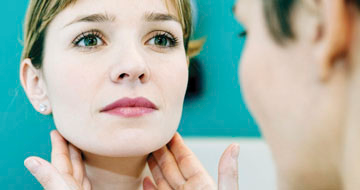
What are my options for fibroid treatment?
As many as 1 in 3 women will have fibroids at some point in their life and yet many people still have questions around cause, diagnosis and cure. These benign (non-cancerous) tumours that grow inside or outside of the womb, can cause symptoms such as painful, heavy or irregular periods and issues with fertility. To help us understand the most effective ways to manage fibroids, consultant gynaecologists Miss Tania Adib and Mr Pandelis Athanasias discuss how they treat patients at our clinic.
Are most of your patients with fibroids of a similar age?
“Often women I see are in their 30s. Many have been on the pill for a while and then come off it. It’s only then they notice they have symptoms such as heavy bleeding or pain. Or they may not have been on the pill and they have been experiencing these symptoms for a while. In the majority of cases they’re young, fertile women.
“Once women reach the menopause, the decline in oestrogen often means fibroids shrink naturally,” says Pandelis Athanasias.
Diagnosing fibroids
“You can often diagnose the type of fibroids a woman has by the symptoms,” says Pandelis Athanasias. “Women might come to me with heavy painful periods or a change in bowel habits, such as constipation.”
“I find the most common symptoms of fibroids are heavy bleeding or pelvic pain. And the fibroids respond to female hormones, so they often grow in women who are fertile,” says Tania Adib.
Fibroids that grow within the uterine wall are intramural; fibroids that grow outside the uterus are subserosal; and submucosal fibroids may grow under the uterus lining and invade the uterus cavity, which often causes heavy bleeding.
“If a woman has a fibroid that’s sitting on the outside of the womb, this may cause pain or discomfort in the area where the fibroid is, but it can also cause pressure on the bladder, so a woman will find she needs to go to the toilet more frequently,” says Tania Adib.
“And If the fibroid is projecting into the cavity of the uterus then that can often cause heavy bleeding so we always have to examine the patient to determine the size, type and location of the fibroids. Knowing this will point us in the right direction for treatment.” says Pandelis Athanasias.
What happens in a consultation?
“We always take time to assess what’s been happening for the patient,” says Pandelis Athanasias.
Typically, after talking with you, if your gynaecologist believes you have fibroids he or she will arrange some imaging of the uterus via an ultrasound. “And if an ultrasound is not conclusive, we then arrange some MRI second-line imaging,” says Pandelis Athanasias.
Other methods of diagnosing fibroids include hysterosalpingography, where a dye is used to show the uterine cavity and fallopian tubes, and a hysteroscopy, where a small microscope is inserted into the vagina so that your gynaecologist can see the cervix.
And how are fibroids treated?
“At the clinic, we always try to tailor the treatment to the woman’s individual needs. Even if a woman’s fibroids are not causing any symptoms, we often find it’s preferable to treat the fibroids so that they won’t cause any issues in the future.
Surgery is often the most effective option, but there are ways to manage fibroids with medication, and other non-surgical options such as uterine artery embolisation (UAE), which, as Tania Adib comments, “is a procedure where you embolise the major blood vessels that go to the fibroid to block the blood supply, causing the fibroid to degenerate. This can be really effective in reducing fibroids that cause pain and heavy bleeding. It’s a very good non-surgical option in certain cases.”
“Very often, for fibroids that are projecting into the cavity of the womb we suggest a surgical procedure which can be done through the vagina, where a thin telescope is inserted into the vagina and small surgical instruments are used to remove the fibroids. Or for fibroids sitting on the outside it’s an abdominal procedure, either through keyhole (laparoscopy) or a cut in the tummy. Both of these procedures are effective for women who want to retain their fertility,” continues Tania Adib.
What’s the recovery time for surgery?
Recovery time varies from woman to woman, depending on her symptoms and general health.
“It’s usually 4-6 weeks recovery for abdominal surgery. But with a surgical procedure performed through the vagina, the patient will be a day case, and there is barely any recovery time,” says Tania Adib.
And can contraception help manage the symptoms of fibroids?
“Some women will want to take contraception and this will help to control heavy bleeding. Or the Mirena coil can be very effective if women are not wanting to get pregnant,” says Tania Adib.
“Medical treatments for fibroids work by regulating the hormones that are involved in the menstrual cycle and they shrink fibroids rather than preventing or eliminating them,” says Pandelis Athanasias.
Can fibroids make it difficult for a woman to get pregnant?
“If you’ve got a fibroid that’s projecting into the womb then it’s very often going to prevent a pregnancy from implanting. And a large fibroid sitting inside the womb can grow in pregnancy and cause we call red regeneration, which causes significant pain. So in these situations, we would discuss whether it would be a good idea to have the fibroid removed before a woman embarks on a pregnancy,” says Tania Adib.
And can diet and lifestyle changes help the symptoms of fibroids?
“Absolutely. The women I see are very motivated to help themselves. Our nutritionist at the clinic is an expert in women’s health and is there to give women support, guidance and dietary advice. She can help women to regulate their hormone levels through diet, which will help to stop their fibroids from growing.
Visiting our clinic
To to find out more about our clinic, or to see Miss Tania Adib or Pandelis Athanasias for a consultation, simply make an appointment online or call us on 020 7244 4200.











